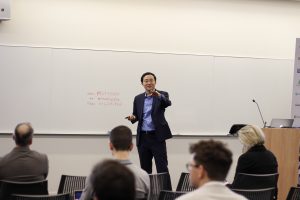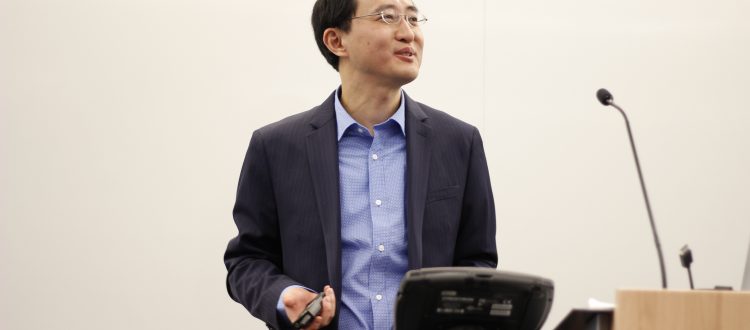Delivering right content on right channel to right user on Bing using AI
By Ethan Wagner, Columbia University
Ting Cai, Director of Bing News at Microsoft, is tasked with leveraging AI to create a deeper engagement with the news component of the search engine. The mantra parallels Microsoft CEO’s own stance about AI in the industry: “AI isn’t’ just another piece of technology. It could be one of the world’s most fundamental pieces of technology the human race has ever created.”
“How has Bing News grown user engagement with AI?” asked Cai, in the opening session of Day Two of the Big Data & AI for Media Conference in New York.
Modern day life is on information overload—constant posts on social media, screens competing for our attention, pop-up notifications distracting our workflow.

News platforms overlook quality in favor of speed and volume at their peril, Cai said. His mission is to provide answers to a fundamental question: “How can we help users find the high-quality content that they enjoy?”
Cai has been working at Bing for 10 years, since the search engine’s inception. During that time, he has helped shepherd Bing through a growth period in market share—zero in 2008 to 23.7 percent in January 2018.
Though Google represents formidable competition, Cai noted that Bing’s desktop market share is at 33 percent when searches conducted via AOL and Yahoo—both powered by Bing’s search technology—are included. Bing has also seen notable international growth, establishing a strong foothold in the UK, Canada, and France. Furthermore, Bing has extended its reach in search via non-traditional devices, serving as the default engine in the browser on Amazon’s Kindle, Xbox, MS Office, and Siri image search on Apple devices.
These days, Cai explained, his primary focus is on Intelligent News. He aims to save users time and keep them informed on topics that are personally relevant to them. Using AI and deep learning, Bing identifies emerging news trends from social media and search queries to identify the stories that people are talking about and make sure they are easily accessible.
Going deeper, Cai explained Bing’s automatic ranking algorithm ranks stories for each individual user, providing a level of personalization that was not possible just a few years ago.
Cai recounted a strange phenomenon that he observed when he worked at Bing’s Index and Knowledge team. Half of the users who came to Bing’s homepage would arrive at the site and then leave without conducting a single search. At that time, Bing had photos on its homepage that must have sparked the interest of many users. But it did not actively seek to engage users, and Cai decided that users should be given more information right away.

Cai demonstrated a sample of Bing’s current news answer, which offers images, social media integration, a timeline of relevant news stories, and other elements designed to reach out to users and determine which topics interest them. Moreover, Bing’s AI separates users’ short-term interests (for example, the latest news story on trade tariffs) from long-term interests (regular hobbies) and makes real-time recommendations accordingly.
One key lesson, Cai said, was not just learning what users are interested in but what they aren’t interested in. To that end, Bing seeks to actively engage with users, moving at times from implicit learning to explicit learning—for example, after a user clicks to a news story about a shooting in Kentucky, Bing will ask the user whether they are interested in stories on crime, on Kentucky, or both.
Leveraging the knowledge graph that Bing builds is key to providing users with content they want and third-party advertisers with data that is useful. Bing does this with a mixture of deep knowledge-aware networks (DKNs), deep learning, and real-time learning.


